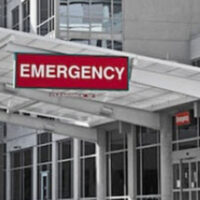The Legal Criteria for ER Malpractice

Emergency room malpractice occurs when medical errors in an emergency setting cause harm to a patient. Understanding what constitutes malpractice and what patients must prove to establish negligence is crucial for those seeking legal redress.
Establishing a Case for Emergency Room Negligence and Challenges in Proving ER Malpractice
Proving malpractice in an emergency room setting presents unique challenges. The high-pressure environment of an ER, the critical nature of illnesses and injuries treated, and the need for rapid medical decisions can complicate malpractice claims.
Even when courts often consider these unique factors when evaluating the reasonableness of a healthcare provider’s actions, patients must demonstrate fundamental negligence elements that are common to most medical malpractice claims:
- Duty of Care: The first element involves establishing that the emergency room staff had a duty of care to the patient. In medical settings, this duty is a legal obligation to provide care that meets specific standards. In an ER setting, due to the nature of emergency medicine, the duty of care is generally assumed as soon as a patient is admitted or begins treatment.
- Breach of Duty: After establishing the duty of care, the patient must then show that there was a breach of this duty. This breach could be a deviation from standard medical practices or a failure to act as a reasonably competent medical provider would under similar circumstances. Examples include misdiagnosis, delayed diagnosis, errors in medication, and failure to conduct necessary tests.
- Causation: The third criterion is causation. This means that the patient must prove that the breach of duty directly caused the injury. In the emergency room context, where patients often present with acute or life-threatening conditions, proving causation can be particularly challenging. The patient must show that the harm was not merely a result of the underlying medical condition but directly due to the negligence.
- Damages: Finally, the patient must demonstrate that they suffered damages as a result of the negligence. This can include physical pain, emotional distress, additional medical bills, and lost wages. Without demonstrable damages, there may be no grounds for a claim, even if negligence occurred.
Documentation and Evidence
Strong documentation and evidence are critical in supporting a malpractice claim. Medical records, witness statements, and expert testimonies play significant roles in establishing the standard of care and deviations from it. Patients are advised to obtain comprehensive medical records and consult legal experts specializing in medical malpractice.
Legal Representation
Legal representation is highly recommended, given the complexities of proving emergency room malpractice. An experienced Philadelphia Birth Injury Lawyer can help navigate the legal system, engage medical experts, and build a compelling case based on thorough investigation and an understanding of medical and legal standards.
Contact The Villari Firm
Understanding and proving emergency room malpractice involves demonstrating a duty of care, a breach of that duty, causation, and damages. Due to the complexities of emergency medicine, these cases are often more challenging than other types of medical malpractice claims. Patients considering legal action should seek experienced medical malpractice lawyers to protect their rights and enhance their chances of a successful outcome.
If you believe you or a loved one has been a victim of emergency room malpractice, The Villari Law Firm is here to help. Our experienced team of attorneys understands the nuances of ER malpractice cases and is committed to advocating for your rights and best interests. Contact us today for a consultation to discuss your case and explore your legal options.
Source:
hg.org/legal-articles/when-can-you-sue-for-emergency-room-malpractice-41863
